System of Human Body | General Awareness for SSC CGL PDF Download
Nutrition in Animals
Animals exhibit heterotrophic nutrition, obtaining food from other organisms. Nutrients are substances that provide nourishment to organisms. Some categories of nutrients in animals include:
- Carbohydrates: Energy-yielding substances, also called saccharides, such as glucose, fructose, and starch.
- Proteins: Function as structural materials in the human body and are composed of amino acids, including keratin, renin, and trypsin.
- Lipids: Serve both structural and energy-providing roles in the human body, produced by the fusion of fatty acids.
- Vitamins: Essential for various biochemical functions. The term "vitamin" comes from the Latin "vita" (life) and "amine" (an organic chemical containing nitrogen). Polish biochemist Casimir Funk coined the term in 1912. Vitamins function as hormones (e.g., vitamin D), antioxidants (e.g., vitamin E), mediators of cell signaling, and regulators of cell and tissue growth and differentiation (e.g., vitamin A). The B-complex vitamins act primarily as precursors for co-enzymes.
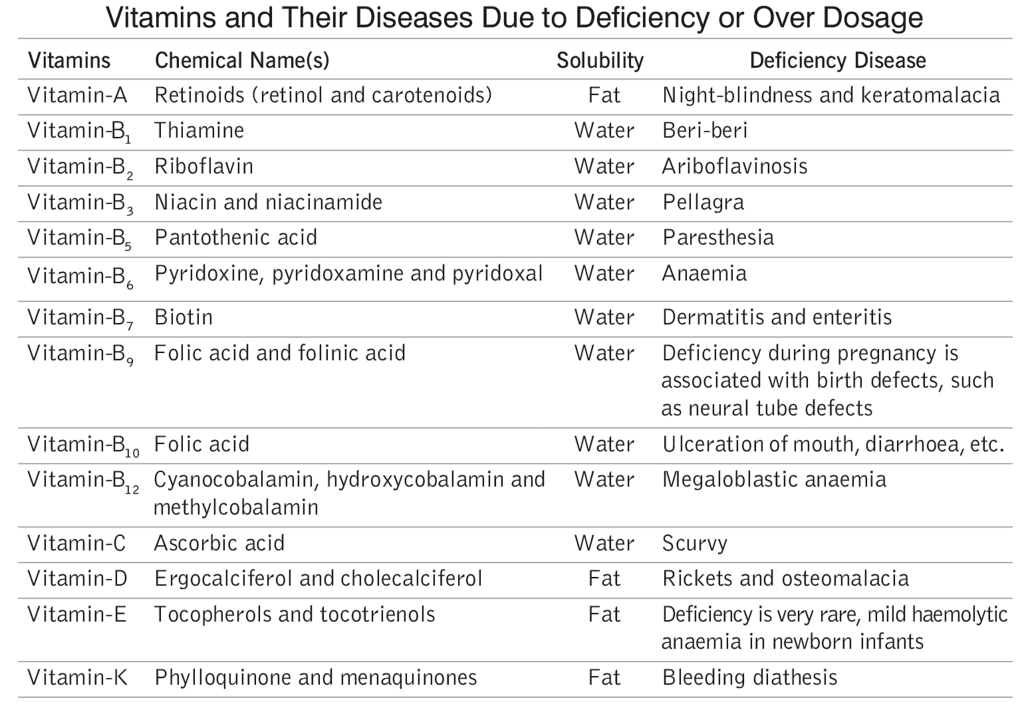
Digestion in Humans
Humans are heterotrophic organisms relying on other organisms for food. The human digestive system acquires food, breaks it down into smaller molecules, and absorbs these nutrients. Absorption is essential as digested nutrients must cross cell barriers to enter the bloodstream and reach their destinations.
Following figure gives a basic idea about digestive system of human beings
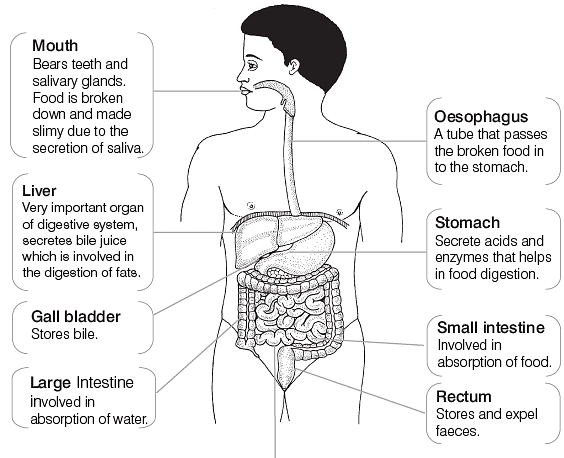
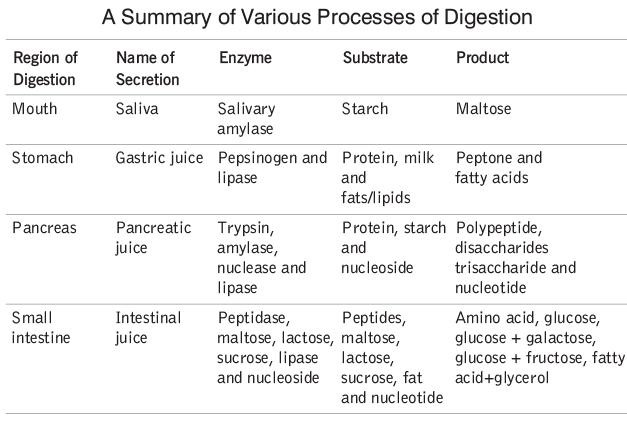
The alimentary canal exhibits two primary types of movements during digestion:
- Mixing movements: Combine digestive juices with food.
- Peristalsis: Moves food along the alimentary canal.
Egestion
Undigested or unabsorbed food in the small intestine moves to the large intestine. Here, water and some minerals are absorbed, and the remaining semi-solid waste, or fecal matter, moves to the rectum for storage before being expelled through the anus.
Disorders of the Digestive System
- Vomiting: Expulsion of food from the mouth due to stomach irritation.
- Diarrhea: Infectious disease causing loose, frequent bowel movements.
- Jaundice: Yellowing of the skin and mucous membranes.
- Gallstones: Formation of cholesterol crystals in the gallbladder.
- Constipation: Difficulty in defecation due to reduced mobility in the large intestine.
- Appendicitis: Inflammation of the appendix.
Respiration in Humans
Respiration is a visible sign of life and can be aerobic (with oxygen) or anaerobic (without oxygen). In humans, respiration occurs at two levels: organ level in the lungs (breathing) and cellular level (cellular respiration, as in plants).
Following figure can give a brief idea of human respiratory system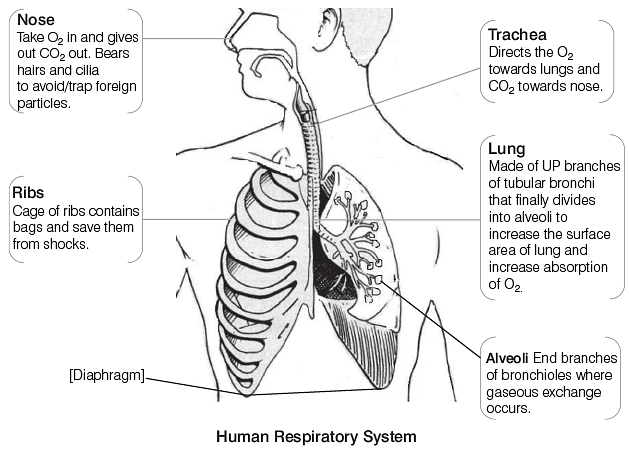
Air reaches the alveoli through the following pathway: Nostril → Nasal cavity → Larynx → Trachea (windpipe) → Bronchi → Bronchioles → Alveoli → Blood capillaries → Tissues.
Mechanism of Breathing
Breathing involves the alternating contraction and relaxation of the diaphragm and the intercostal muscles in the ribs.
Oxygen Transport
- Once atmospheric air reaches the alveoli, respiratory gases exchange through diffusion.
- The partial pressure of O2 in inspired air is 100 mmHg, allowing oxygen to diffuse into the blood vessels where the partial pressure of O2 is lower (40 mmHg).
- Approximately 98.5% of oxygen is transported by blood via hemoglobin in red blood cells.
- Each hemoglobin molecule can carry up to four oxygen molecules.
Carbon Dioxide Transport
- About 1% of CO2 is transported dissolved in plasma, 23% as carbamino-hemoglobin, and 70% as bicarbonates.
Respiratory Quotient (RQ)
- The respiratory quotient is the ratio of the volume of CO2 released to the volume of O2 absorbed, determined using Ganong’s respirometer.
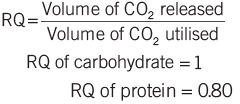 It is determined by Ganong’s respirometer.
It is determined by Ganong’s respirometer.
Disorders of the Respiratory System
- Asthma: Caused by inflammatory stimuli or airway blockage, leading to coughing and difficulty breathing.
- Pneumonia: Acute infection or inflammation of the alveoli.
- Tuberculosis: Inflammation of the lungs or pleural membrane, with symptoms including fatigue, weight loss, fever, and coughing.
Transportation in Humans
- The transportation of food and gases absorbed through the intestines and lungs is facilitated by blood, which is circulated to all parts of the body by the heart.
- Blood itself does not move autonomously; instead, it is pumped by the heart, a hollow, muscular organ located between the lungs towards the left side.
- The heart weighs 280-340g in males and 230-280g in females.
- It is covered by the pericardium and contains two atria and two ventricles, making it a four-chambered organ.
Following diagram gives a brief idea of transport system in humans
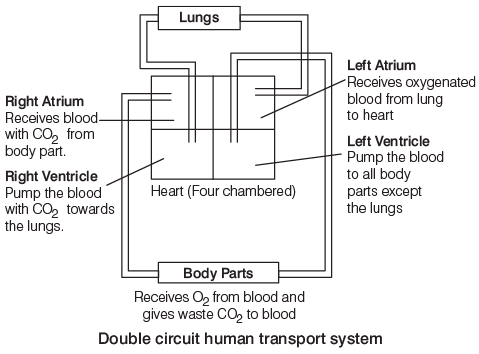
Important Facts About the Transport System
- Closed Circulatory System: Unlike an open circulatory system where blood flows through open spaces, humans have a closed circulatory system where blood flows through a network of blood vessels.
- Heart Function: The heart pumps blood in a rhythmic cycle of systole (contraction) and diastole (relaxation). A complete heartbeat, comprising both systole and diastole, lasts about 0.8 seconds.
- Blood Composition: Blood is a type of connective tissue composed of plasma and blood cells (RBCs and WBCs). Platelets are blood cells responsible for preventing blood leakage and aiding in coagulation during injuries.
- Blood Pressure: The force exerted by blood against the walls of blood vessels is called blood pressure. It is higher in arteries (systolic pressure) and lower in veins (diastolic pressure). The average blood pressure is 120/80 mmHg.
- Blood Vessels: Blood vessels that carry blood to the body are called arteries (except for the pulmonary artery), while those that carry blood back to the heart are called veins (except for the pulmonary vein).
Wireless Pacemaker: A wireless pacemaker regulates the heart using ultrasound pulses from outside the body, reducing the need for additional surgeries to replace leads, unlike conventional pacemakers.
- Electrocardiogram (ECG): An ECG is a graphical record of the heart's electrical activity, showing the chemical exchanges that produce electric currents.

Cardiovascular Diseases
- Arteriosclerosis: Hardening of the arteries due to plaque formation and calcification in their walls.
- Atherosclerosis: Narrowing of arteries due to cholesterol deposition, hindering blood flow.
- Heart Attack: Sudden decrease in blood supply to the heart, causing damage to heart muscles.
- Angina Pectoris: Chest pain caused by insufficient oxygen reaching the heart muscles.
Excretion in Humans
Excretion is the process of expelling waste products from the body. Nitrogen, in the form of urea, is excreted by the excretory system. Each kidney is made up of coiled units called nephrons, which consist of:
- Blood Vascular Component: Glomerulus.
- Tubular Component: Bowman’s capsule, convoluted distal tubules, and a collecting duct.
Following diagram gives a brief about excretion system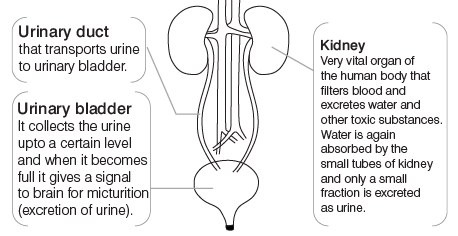
Urine Formation in the Kidney
- Glomerular Filtration: Blood and minerals move from the glomerulus to Bowman’s capsule through filtration slits, forming ultrafiltrate.
- Tubular Reabsorption: 99% of the water filtered through the glomerulus is reabsorbed, along with solutes like vitamins and glucose, which re-enter the bloodstream.
Antidiuretic hormone (ADH) reduces urine formation, helping the kidneys excrete concentrated urine and conserve water. The counter-current mechanism aids in the formation of concentrated urine.
Disorders of the Excretory System
- Kidney Stones: Crystallized salts in urine can solidify, causing intense pain and blockage of the ureters.
- Diabetes Insipidus: Caused by very low levels of ADH.
- Uremia: Excess urea in the blood.
Artificial Kidney
- In cases of kidney disease or injury, blood can be cleaned artificially through dialysis using a haemodialyzer.
Skeletal System
- The skeletal system is a framework of bones and cartilage that supports, protects, and maintains body form. It can be external (exoskeleton) or internal (endoskeleton). The endoskeleton is classified as either axial (along the median longitudinal axis) or appendicular (at the lateral sides).
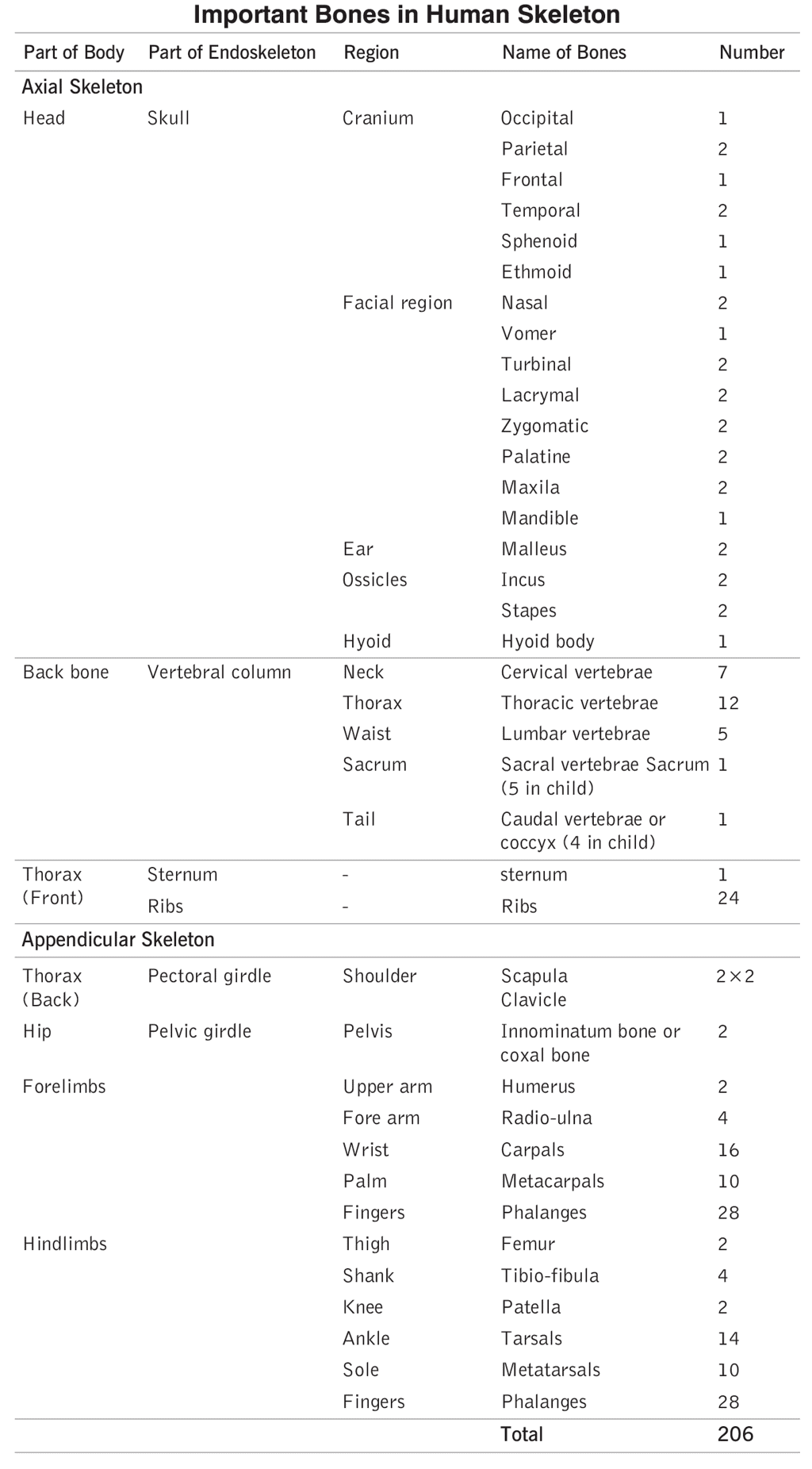

Disorders of the Skeletal System
- Arthritis: Inflammation of the joints.
- Osteomalacia: Insufficient calcium and phosphorus in bones.
- Osteoporosis: Loss of minerals and fibers from the bone matrix.
- Sprain: Twisting of a joint causing ligament damage (ligaments connect bones to each other).
Neural Coordination in Humans
Every system in the human body works in harmony, functioning as a unit. This coordination is maintained by two critical systems: the neural (nervous) system and the endocrine system.
Neural Coordination by the Nervous System
The nervous system receives stimuli from various parts of the body through long, fiber-like cells called neurons. Neurons conduct these stimuli to the brain, which processes them and sends signals back to the body via neurons. The basic structure of a neuron is shown on the side.
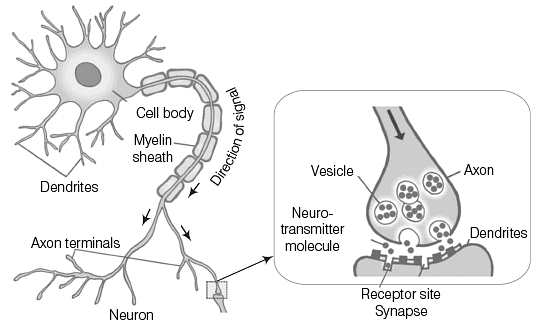
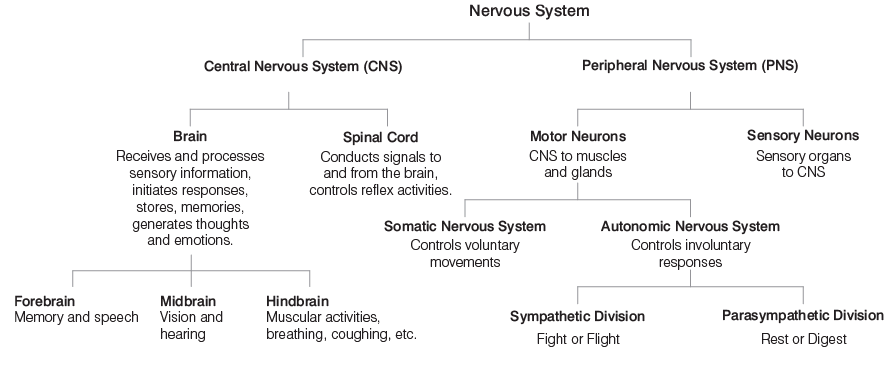
- Synapse: A synapse facilitates the transmission of nerve impulses from one neuron to another. The membranes of presynaptic and postsynaptic neurons are separated by a synaptic cleft. Neurotransmitters in the presynaptic neurons are released into these clefts, transmitting signals. These neurotransmitters (e.g., dopamine and acetylcholine) bind to specific receptors on the postsynaptic membrane, allowing signal transmission.
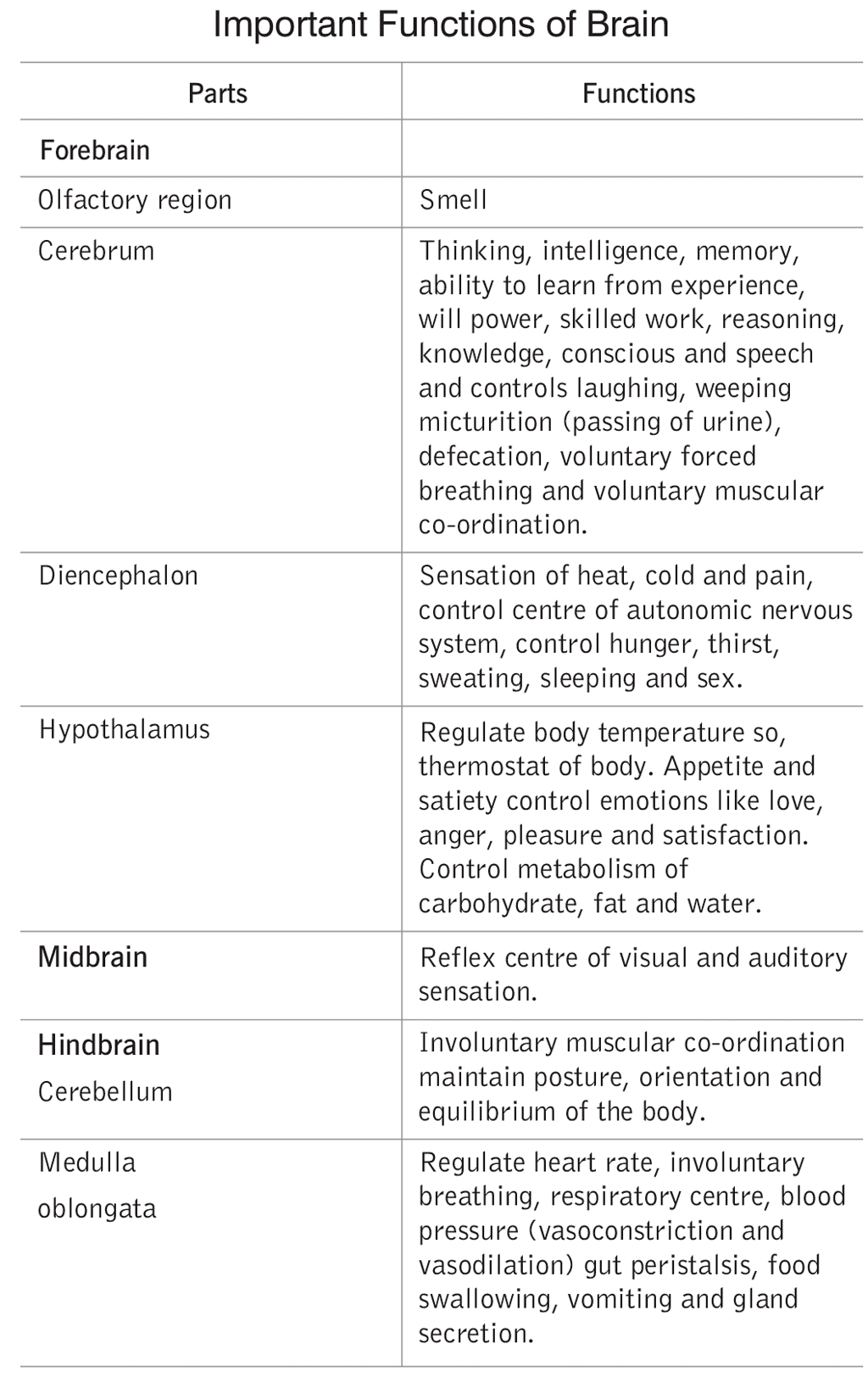
Reflex Action
A reflex action is an automatic response to a stimulus, carried out without conscious thought. Controlled by the spinal cord, this is called a spinal reflex action. A reflex arc is the path through which an impulse travels during reflex action.
Diseases of the Nervous System
- Meningitis: Inflammation of the brain's meninges (coverings or membranes), caused by viral or bacterial infection. Symptoms include intense headache, fever, sensitivity to light, and muscular rigidity.
- Parkinson’s Disease: Caused by the destruction of dopamine-producing neurons, affecting voluntary movements.
- Alzheimer’s Disease: Due to the destruction of many neurons in the hippocampus (part of the forebrain), resulting in a deficiency of the neurotransmitter acetylcholine in the brain. Patients struggle to remember recent events.
- Myelodysplasia: Abnormal development of the spinal cord.
Sense Organs
Sense organs receive stimuli (environmental changes) from outside or inside the body and transmit them to the nervous system. The various sense organs in humans include:
Ears (Organs of Hearing and Equilibrium): Each ear consists of three parts, including the tympanic cavity, which is covered by a tympanic membrane or eardrum.
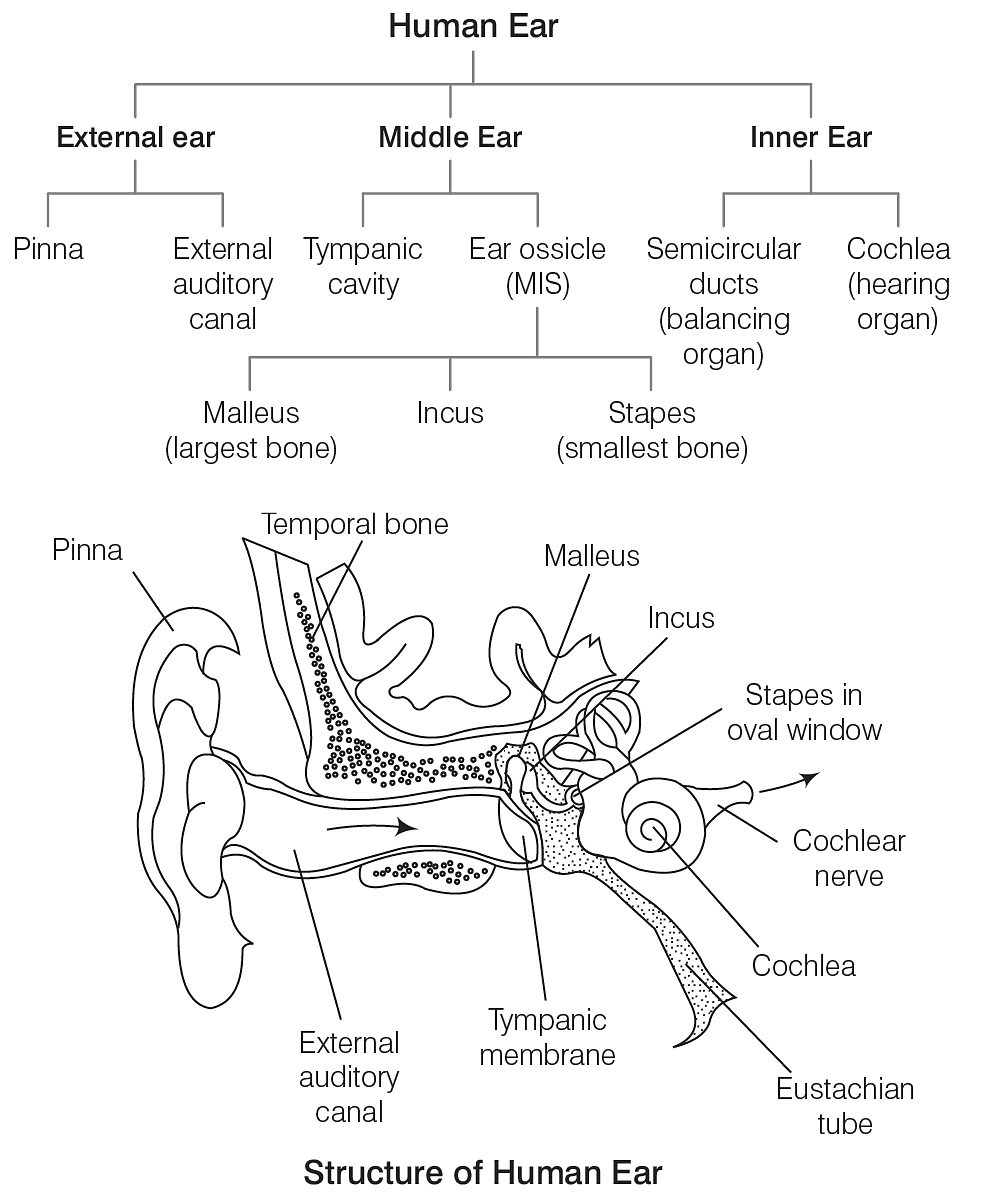
Ear Diseases:
- Tinnitus: Characterized by roaring in the ears due to loud noises or other causes.
- Ear Barotrauma: Injury to the ear due to changes in air or water pressure.
Eyes (Organs of Sight): The human eye is a structure with three coats.
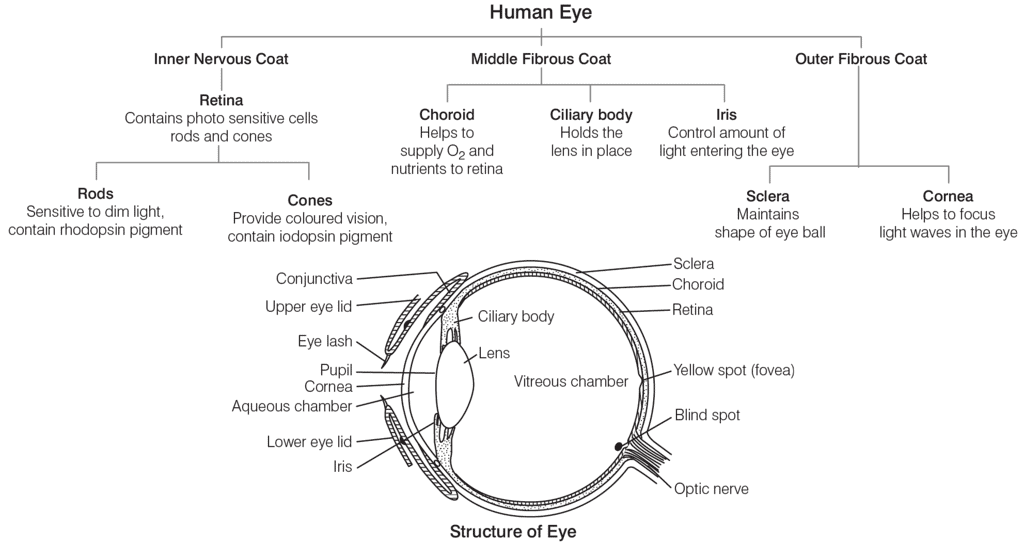
Eye Diseases:
- Myopia (Nearsightedness): The image forms in front of the retina, making distant objects difficult to see. Corrected with concave glasses.
- Hypermetropia (Farsightedness): The image forms behind the retina, making near objects difficult to see. Corrected with convex glasses.
- Astigmatism: Caused by irregular curvature of the cornea or lens. Corrected with convex lenses.
- Presbyopia: Caused by loss of lens flexibility, making it difficult to focus on near objects. Corrected with convex lenses.
- Cataract: Loss of lens transparency due to disease or other factors. Corrected by surgical removal and insertion of intraocular lenses.
- Glaucoma: Caused by increased eye pressure and peripheral vision loss, potentially leading to blindness. Surgery to reduce intraocular pressure is the only remedy.
Tongue (Taste) and Nose (Smell): Taste receptors on the tongue are called gustatory receptors, and smell receptors in the nose are called olfactory receptors. These receptors are stimulated by molecules or ions reaching the tongue and nose.
Skin (Organ of Touch): The skin is the sensory organ for touch.
Human skin contains various receptors as follows
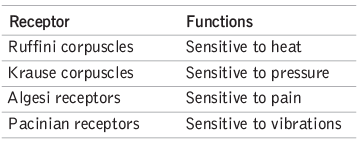
Chemical Coordination by the Endocrine System
The endocrine system consists of endocrine glands, which are ductless glands that secrete chemicals called hormones. These hormones travel from one part of the body to another. The following table provides an overview of hormones, their source glands, and their sites of action.
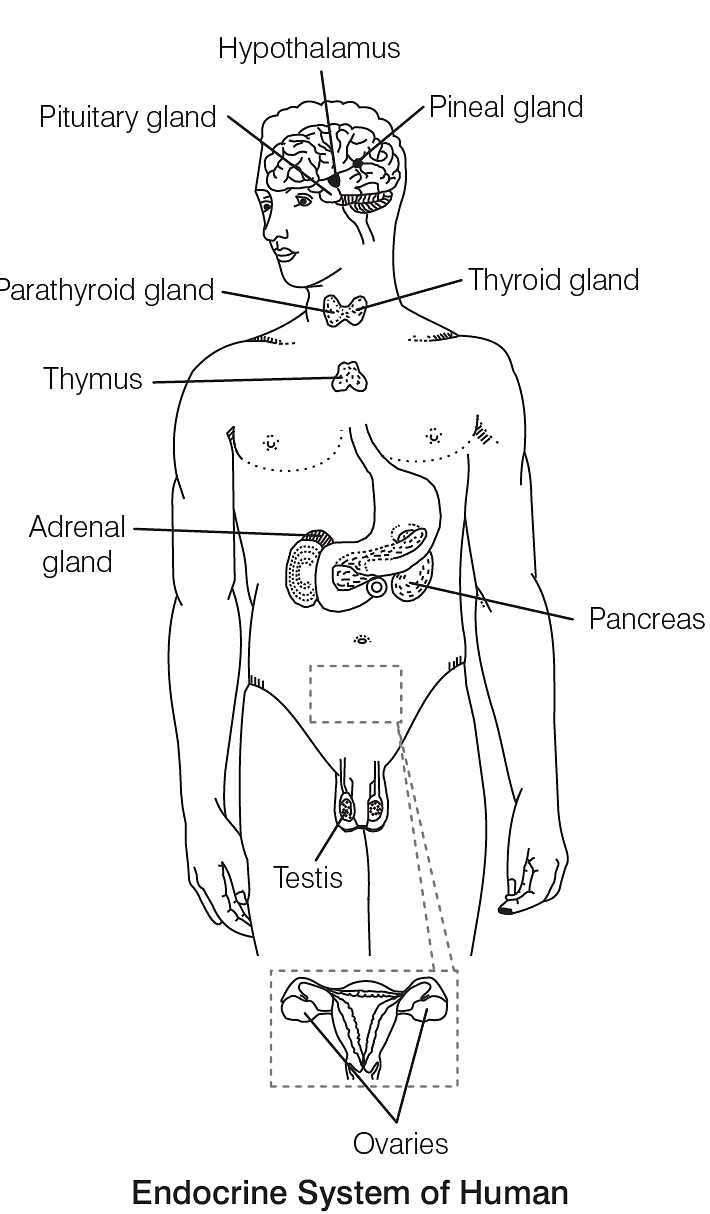
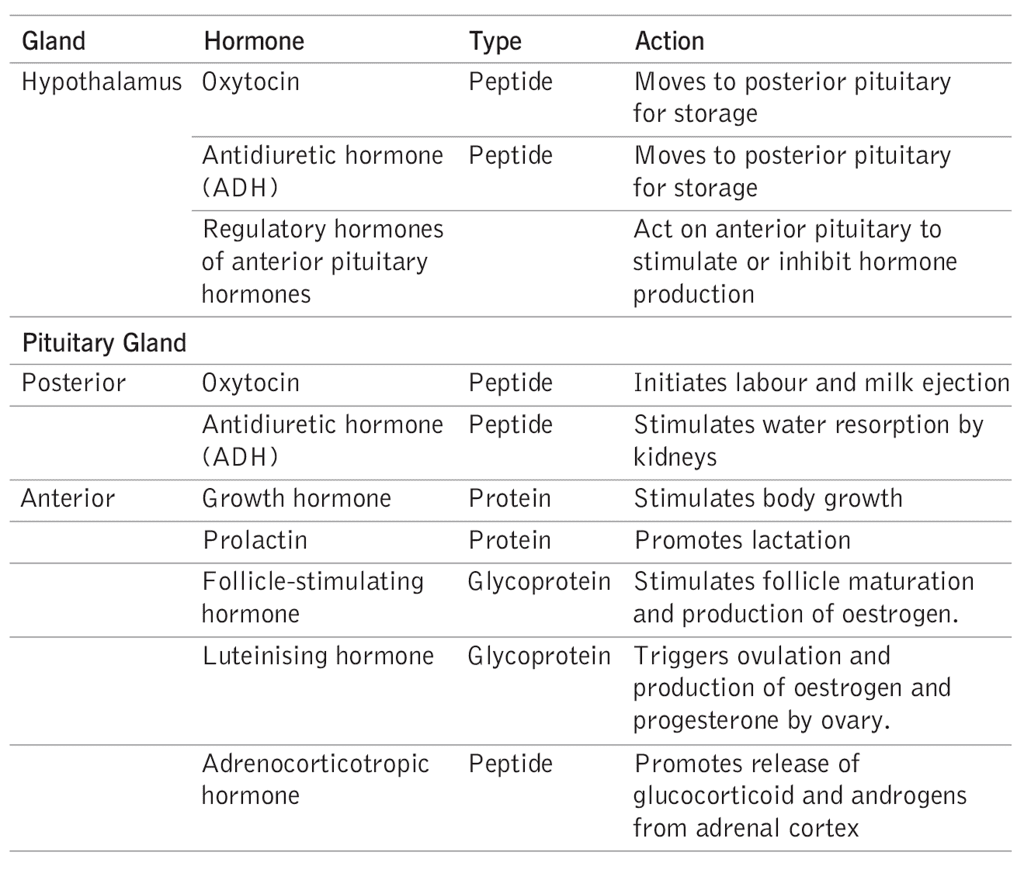

|
448 videos|1497 docs|288 tests
|
FAQs on System of Human Body - General Awareness for SSC CGL
| 1. What is the main function of the respiratory system in humans? |  |
| 2. How does the skeletal system support the human body? |  |
| 3. What is the role of the endocrine system in the human body? |  |
| 4. How does the process of digestion occur in humans? |  |
| 5. What are some examples of sense organs in humans? |  |
















